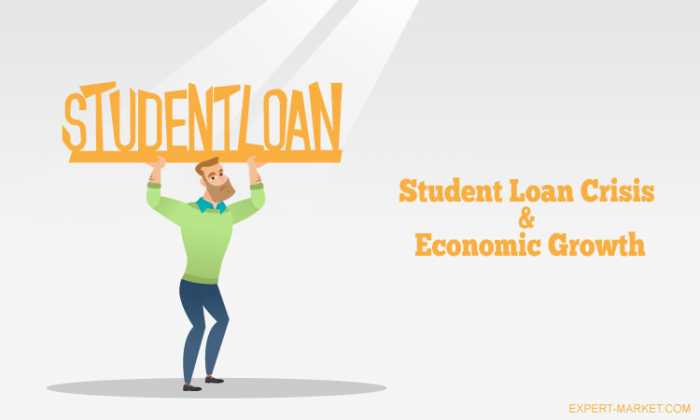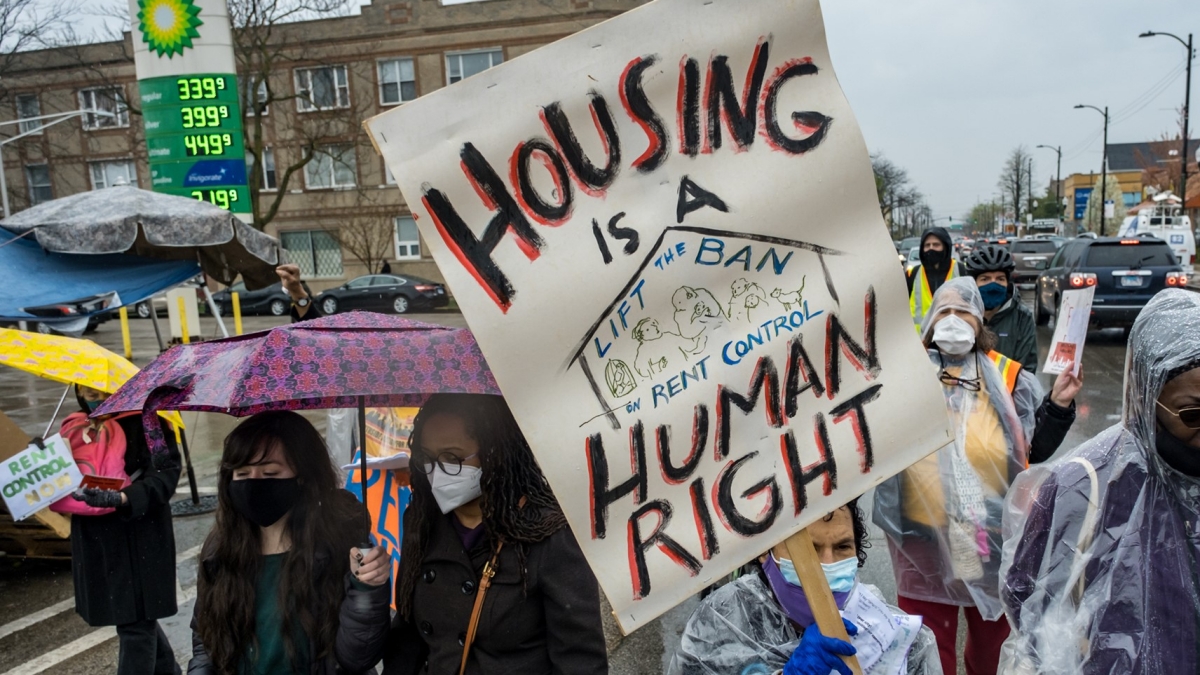Examining The Economic Fallout Of The Student Loan Crisis

Table of Contents
The Crushing Burden of Individual Debt
The sheer weight of student loan debt significantly impacts borrowers' financial well-being and life choices. This personal burden ripples outward, affecting the overall economy.
Impact on Personal Finances
Student loan debt dramatically alters the financial landscape for millions. The monthly payments often consume a large portion of borrowers' income, leaving little for other essential needs or long-term financial planning.
- Reduced disposable income: High monthly payments directly reduce disposable income, leading to decreased consumer spending and impacting economic growth. This impacts everything from purchasing new cars to dining out and contributes to a weakened economy.
- Difficulty saving for emergencies: The constant pressure of loan repayments makes it difficult to build an adequate emergency fund. This leaves borrowers vulnerable to unexpected financial setbacks, forcing them into even deeper debt.
- Delayed major life milestones: Many borrowers delay significant life milestones, such as homeownership, marriage, and starting a family, due to the constraints of student loan debt. This impacts housing markets and overall population growth patterns.
- Increased stress and mental health issues: The financial strain associated with student loan debt significantly contributes to stress, anxiety, and depression. This has broader societal implications, impacting productivity and overall well-being.
The Rise of Student Loan Defaults
High student loan default rates exacerbate the problem. When borrowers fail to repay their loans, it creates a cycle of negative consequences, impacting both the individual and the broader economy.
- Negative impact on credit scores: Defaults severely damage credit scores, making it extremely difficult to secure future loans for housing, automobiles, or starting a business. This hinders economic mobility and opportunities.
- Wage garnishment: The government can garnish wages to recover defaulted student loans, further reducing borrowers’ disposable income and making it even harder to get back on their feet.
- Potential for bankruptcy: In extreme cases, borrowers may resort to bankruptcy as a last resort to escape the crushing weight of student loan debt. However, student loans are notoriously difficult to discharge in bankruptcy.
Systemic Economic Impacts of the Student Loan Crisis
The student loan crisis extends far beyond the individual borrower, creating systemic risks and slowing overall economic growth.
Slowed Economic Growth
The massive accumulation of student loan debt hampers overall economic growth. Borrowers prioritize loan repayments, reducing their spending on other goods and services.
- Reduced aggregate demand: Lower consumer spending due to high student loan payments reduces overall aggregate demand, contributing to sluggish economic growth.
- Decreased entrepreneurial activity: The burden of student loan debt discourages many individuals from starting their own businesses, hindering innovation and job creation. Potential entrepreneurs are often forced to pursue more stable (but potentially less fulfilling) employment to manage their debt.
- Impact on GDP growth: The combined effect of reduced consumer spending and decreased entrepreneurial activity negatively impacts the Gross Domestic Product (GDP) growth rate.
Strain on the Financial System
The sheer volume of student loan debt presents significant risks to the financial system. A high default rate could destabilize the market and impact taxpayers.
- Potential for systemic risk: If a large portion of the student loan portfolio defaults, it could trigger a systemic crisis, similar to the subprime mortgage crisis.
- Increased burden on taxpayers: Many student loan programs are government-backed, meaning taxpayers ultimately bear the cost of defaults. This represents a significant financial burden on the public sector.
- Need for regulatory reform: The student loan market needs stricter regulations to mitigate risks and protect both borrowers and the financial system. Greater transparency and oversight are crucial.
Potential Solutions and Policy Recommendations
Addressing the student loan crisis requires a multi-pronged approach encompassing both debt relief and systemic reforms.
Debt Forgiveness Programs
Debt forgiveness programs are a hotly debated topic. While they could provide immediate relief to borrowers, their economic implications need careful consideration.
- Targeted forgiveness programs: Programs focused on specific demographics (e.g., low-income borrowers) or types of loans could offer a more equitable solution while minimizing overall economic impact.
- Pros and cons of widespread debt cancellation: While widespread cancellation could provide substantial relief, it would likely have significant economic consequences, including increased inflation and potential impacts on the federal budget. A thorough cost-benefit analysis is crucial.
- Addressing the equity implications: Any debt forgiveness program must carefully consider its impact on different groups to ensure equitable outcomes and avoid exacerbating existing inequalities.
Reforms to the Student Loan System
Fundamental reforms are needed to make higher education more affordable and accessible, reducing the need for massive loans in the first place.
- Increased government funding for grants and scholarships: Expanding access to grants and scholarships can reduce reliance on loans.
- Reforms to interest rates and repayment plans: Lower interest rates and more flexible repayment plans can make loans more manageable for borrowers. Income-driven repayment plans need to be simplified and streamlined for easier access.
- Promoting transparency and accountability: Greater transparency in lending practices and stronger accountability mechanisms within the student loan industry can protect borrowers from predatory practices.
Conclusion
The student loan crisis is a complex problem with significant and far-reaching economic consequences. From crippling individual borrowers to impacting overall economic growth and straining the financial system, its effects are undeniable. Addressing this crisis requires a multifaceted approach, including targeted debt relief programs and fundamental reforms to the student loan system itself. We need to move beyond simply managing the crisis and toward proactive solutions that ensure future generations have access to affordable higher education without the crippling weight of overwhelming debt. Let's work together to find effective solutions to this pervasive student loan crisis and build a more equitable and sustainable future. Contact your representatives to advocate for solutions to the student loan debt problem.

Featured Posts
-
 Hasil Pertandingan Uefa Nations League Belanda 2 2 Spanyol
May 28, 2025
Hasil Pertandingan Uefa Nations League Belanda 2 2 Spanyol
May 28, 2025 -
 Nov Obrat Khyu Dzhakman E Svrzan Ss Skandala Mezhdu Bleyk Layvli I Dzhstin Baldoni
May 28, 2025
Nov Obrat Khyu Dzhakman E Svrzan Ss Skandala Mezhdu Bleyk Layvli I Dzhstin Baldoni
May 28, 2025 -
 Avengers Doomsday The Hugh Jackman Casting Speculation
May 28, 2025
Avengers Doomsday The Hugh Jackman Casting Speculation
May 28, 2025 -
 A Hideg Es A Szarazsag Kihivasai Alfoeldi Noevenykulturak Vedelme
May 28, 2025
A Hideg Es A Szarazsag Kihivasai Alfoeldi Noevenykulturak Vedelme
May 28, 2025 -
 Housing Corporations To Sue Minister Over Rent Freeze
May 28, 2025
Housing Corporations To Sue Minister Over Rent Freeze
May 28, 2025
